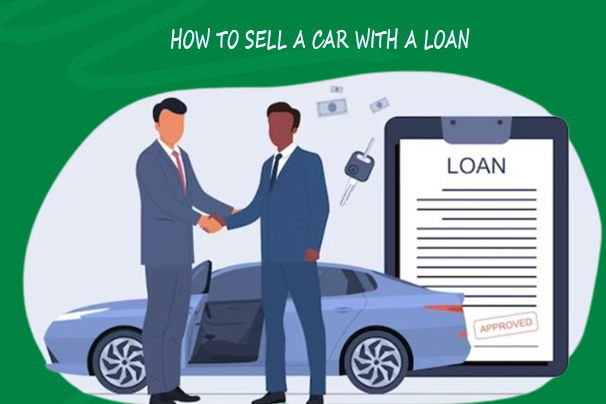Most individuals would want to have an insight into how to sell a car with a loan, with additional procedures involved. However, whether you choose to sell depends solely on several factors, such as the loan amount left and the selling price of your car. Selling a car with a loan requires assessing your equity in the vehicle and coordinating with your lender to transfer the title to the buyer.

Although having a car loan doesn’t prevent you from selling your car, you can either pay off the loan with the sale proceeds or through a trade-in. Lastly, selling your car with a loan is advisable, depending on your financial circumstances.
How to Sell a Car with a Loan
Selling a car with an outstanding loan requires understanding the remaining balance on your loan and staying in communication with your lender. If you are selling to a private or commercial individual, here are some tips on selling a car with a loan.
Determine the value of the Car
To ensure you sell your vehicle for a favorable price, it’s important to determine its value. Resources like Kelley Blue Book and Edmunds consider factors such as the make, model, mileage, and age of your car.
Additionally, KBB and Edmunds provide estimates for both private-party sales and trade-in values. Typically, selling your car privately leads to a higher gain.
Moreover, you can gather estimates from used-car websites such as Carvana and CarMax. These platforms require details like your car’s make and model, its overall condition, and your location to provide accurate estimates.
Get the Loan Payoff Amount
Additionally, it’s important to reach out to your lender to know the loan payoff amount. This is the amount to assume full ownership of the car, independent of the remaining loan balance.
Moreover, this amount might differ from the outstanding loan balance. Although it’s not usual, it’s advisable to confirm whether your lender imposes a prepayment penalty.
Lastly, since lenders generate funds on interest throughout the loan’s duration, a prepayment penalty serves to reduce potential losses.
Ask a lender for Advice
When you reach out to your lender for the payoff amount, be sure to inquire about the steps for finalizing the sale of your car. Whether you intend to sell the vehicle privately or not, the lender will provide the process you need to follow.
- Local bank or credit union
If your loan originates from a local bank or credit union, you might be requested to bring the buyer to a nearby branch in person. In addition, you will complete the necessary paperwork for the sale.
- Online Lender
When dealing with an online lender, they typically have a network of banks available for your use. You’ll need to bring the buyer to a designated location to finalize the sale, following the lender’s instructions.
Additionally, you can offer your car for sale to a dealership, either in person or through online platforms such as CarMax. Moreover, the car dealer can directly liaise with your lender to facilitate the transaction.
Understand Your Car’s Equity
Determining your car’s equity involves reducing the payoff amount from its value. This calculation can have two possible outcomes, which are positive equity and negative equity.
Positive equity occurs when the value of your car surpasses the outstanding debt. For instance, if your vehicle has a value of $30,000 and your loan balance stands at $25,000, you possess $15,000 in positive equity.
Negative equity, commonly referred to as an upside-down car loan, arises when the value of your car is less than the outstanding loan balance. For instance, if your vehicle has a value of $30,000 and your loan balance amounts to $35,000, you would require an additional $5,000 to settle your car loan.
Find a Buyer
The next step involves finding a buyer and engaging in negotiations to secure a mutually agreeable price. Moreover, if you possess positive equity in your vehicle, the proceeds from the sale should be adequate to settle the loan balance.
However, you will need to find a plan to cover the outstanding loan amount. Furthermore, it’s advisable to ascertain your equity and obtain a payoff amount from your lender before price discussions.
Discuss the sale with your Lender
Before deciding, it’s right to communicate with your lender regarding the potential sale of your car. This enables the lender to offer guidance on any particular instructions or prerequisites you must fulfill.
Additionally, the lender might disclose partnerships with specific dealerships to facilitate the sale of your vehicle.
Conclusion
Selling a car with an outstanding loan requires careful planning, as long as you collaborate with your lender and are transparent with the buyer. In addition, begin by determining the market value of your vehicle and identifying your payoff amount and equity. Lastly, collaborate with your lender to finalize the sale process smoothly.
